There are few wildlife experiences as awe-inspiring as witnessing wild elephants in their natural habitat. These magnificent creatures—the largest land mammals on Earth—roam freely across various ecosystems, from dense jungles to open savannas. With their complex social structures, remarkable intelligence, and gentle demeanor, elephants captivate the hearts of wildlife enthusiasts worldwide. However, with elephant populations facing threats from habitat loss, poaching, and human-wildlife conflict, responsible elephant tourism has become increasingly important for conservation efforts. This article explores the most spectacular destinations around the world where you can ethically observe these gentle giants in their natural environments, contributing to both unforgettable travel experiences and the preservation of these endangered species.
Chobe National Park, Botswana
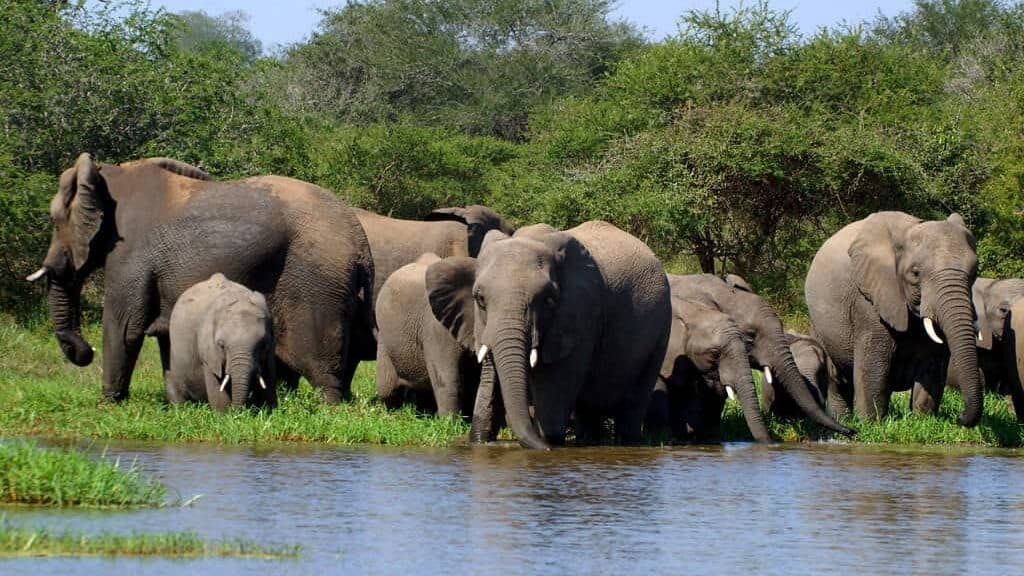
Botswana’s Chobe National Park boasts the highest concentration of elephants in Africa, with an estimated population exceeding 120,000. This wildlife paradise is particularly known for the spectacular gatherings of elephants along the Chobe River during the dry season (May to October). As water sources dwindle elsewhere, hundreds of elephants converge at the riverfront, creating one of the most breathtaking wildlife spectacles on the continent. Visitors can observe family herds drinking, bathing, and playing in the water while calves frolic under the watchful eyes of their mothers and aunts.
What makes Chobe especially remarkable for elephant viewing is the variety of safari options available. Water-based safaris aboard small boats allow for incredibly close yet non-intrusive encounters as elephants swim across channels with only their trunks visible above water. Meanwhile, land-based game drives provide opportunities to witness large herds traversing the savanna. The park’s commitment to conservation and sustainable tourism has created a sanctuary where elephants thrive relatively undisturbed, making it perhaps the premier destination worldwide for observing these magnificent creatures in abundance.
Amboseli National Park, Kenya

Few wildlife scenes are as iconic as elephants wandering across Amboseli’s plains with snow-capped Mount Kilimanjaro towering in the background. This Kenyan national park is home to approximately 1,500 elephants, including some of the largest tuskers remaining in Africa. What makes Amboseli particularly special for elephant enthusiasts is the groundbreaking research conducted here for decades by the Amboseli Elephant Research Project, providing unprecedented insights into elephant behavior, communication, and social structures. Many of the park’s elephant families have been studied for generations, with detailed records of their family trees and behaviors.
The park’s open landscape of acacia woodland, grassland, and seasonal swamps fed by underground springs from Kilimanjaro creates perfect viewing conditions. During dry seasons, elephants gather around these water sources, allowing visitors to witness complex social interactions—from tender moments between mothers and calves to playful sparring between adolescent males. The park’s relatively small size (392 sq km) and the elephants’ habituation to safari vehicles enable exceptionally intimate and prolonged observations that wildlife photographers and elephant enthusiasts cherish.
Minneriya and Kaudulla National Parks, Sri Lanka
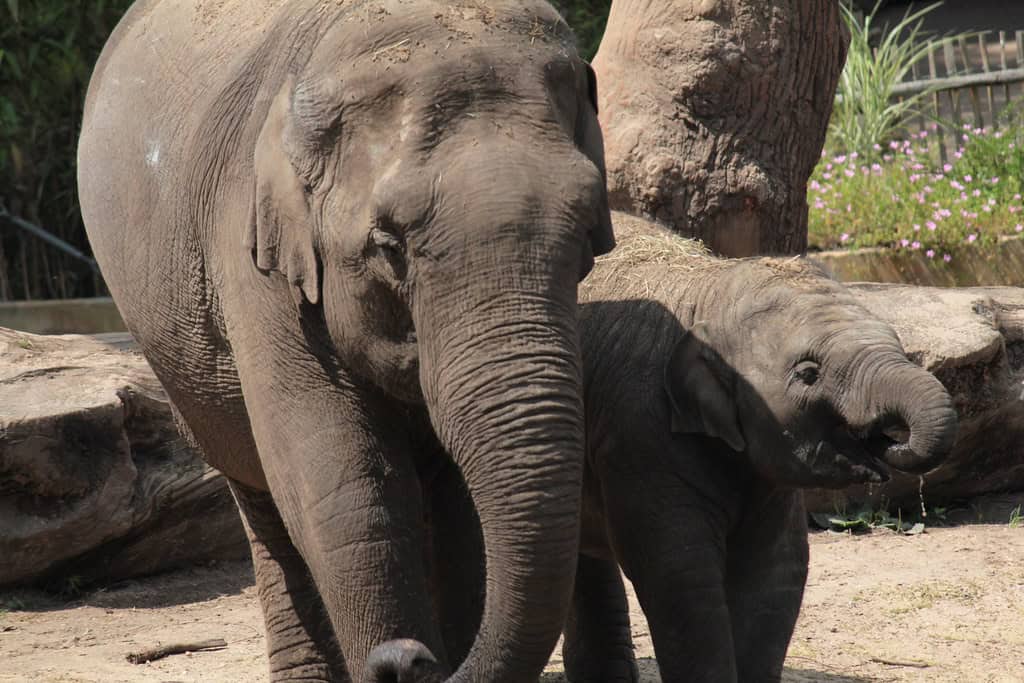
Sri Lanka offers one of the most remarkable elephant spectacles in the world during the annual “gathering.” Between July and October, up to 300 Asian elephants congregate around the ancient Minneriya reservoir, creating the largest known assembly of Asian elephants anywhere on Earth. This natural phenomenon occurs when water sources elsewhere dry up, drawing elephants from throughout the region to the receding waters of the tank (reservoir), where fresh grass grows on the exposed lake bed. Adjacent Kaudulla National Park serves as an overflow area when elephant numbers become too high at Minneriya.
What distinguishes this elephant experience is the opportunity to observe Asian elephants—a different species from their African cousins—in such large numbers. Asian elephants typically move in smaller family groups, making this seasonal congregation truly exceptional. The open landscape around the reservoirs provides unobstructed views of elephants feeding, socializing, and protecting their young. Unlike some wildlife viewing experiences that require long waits or luck, the gathering virtually guarantees spectacular elephant sightings during the peak season, with family groups often visible from multiple safari jeeps positioned at respectful distances.
Kruger National Park, South Africa
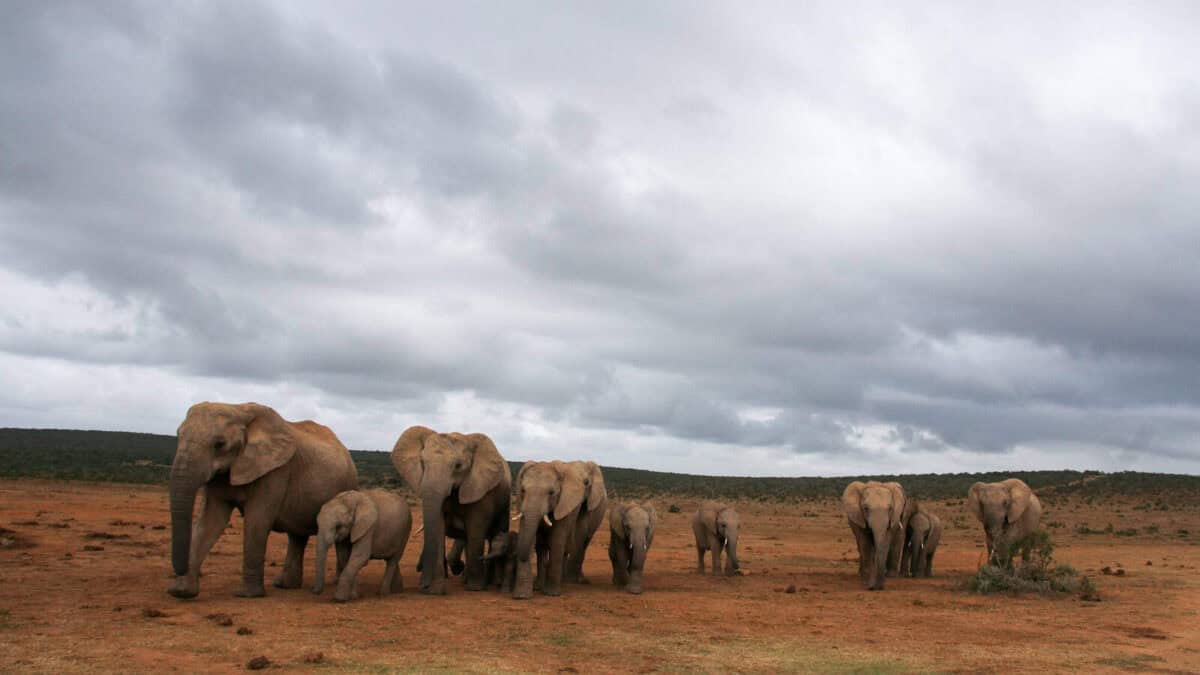
As one of Africa’s oldest and most renowned conservation areas, Kruger National Park harbors an estimated 17,000 elephants roaming across its vast 19,485 square kilometers. What sets Kruger apart is its accessibility and infrastructure, with paved roads allowing self-drive safaris alongside professional guided tours. This democratization of wildlife viewing means visitors of varying mobility levels and budgets can experience elephant encounters. The park’s diverse habitats—from riverine forests to open savanna—support different elephant feeding and movement patterns throughout the seasons.
Kruger’s elephant population has actually grown too large for the available habitat in recent decades, presenting conservation challenges but also virtually guaranteeing sightings. Visitors frequently witness impressive behaviors like bulls testing strength through pushing contests, families cooling off at waterholes, or herds crossing roads with military precision—youngest members protected in the center. The park’s network of hides and viewpoints overlooking waterholes offers patient observers extended viewing opportunities, especially during the dry winter months (May to September) when elephants congregate around permanent water sources. For those seeking a more exclusive experience, the private reserves bordering Kruger, like Sabi Sands, offer luxury lodges with expert guides who track elephant movements daily.
Udawalawe National Park, Sri Lanka
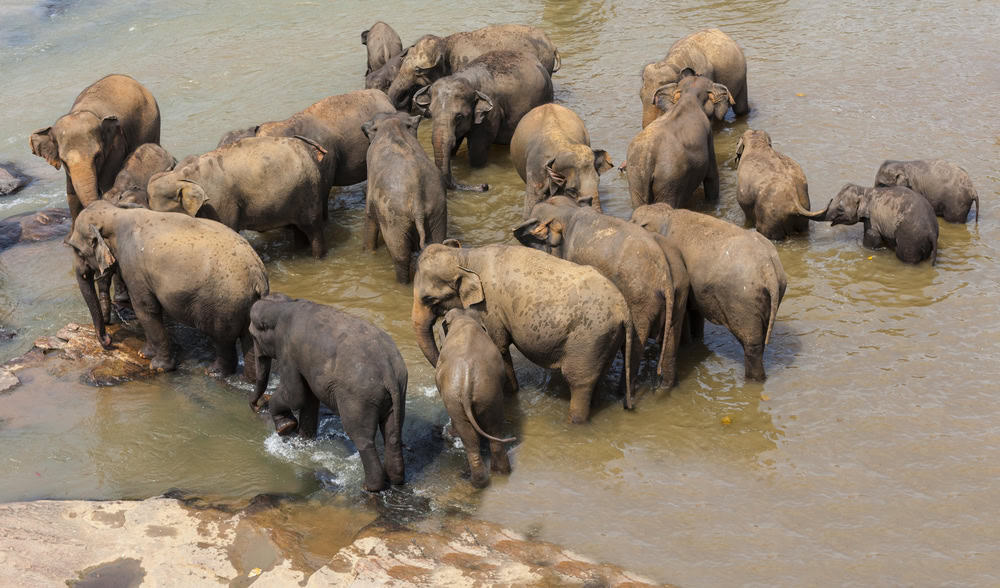
While Minneriya hosts the famous gathering, Udawalawe National Park offers the most reliable year-round elephant viewing in Sri Lanka. Created partly as an elephant sanctuary following the construction of the Udawalawe Reservoir, this compact park (308 sq km) supports around 500-700 elephants. The park’s relatively open habitat of grassland and scattered trees provides excellent visibility, with elephants often spotted within minutes of entering the park. What makes Udawalawe particularly special is the opportunity to observe maternal herds with calves of various ages, offering insights into elephant family dynamics.
Adjacent to the park, the Elephant Transit Home rehabilitates orphaned elephant calves for eventual release back into the wild. Visitors can watch the orphans’ feeding times before exploring the national park to potentially see previously released elephants thriving in their natural environment. Unlike some elephant experiences in Asia that involve captive animals, Udawalawe offers ethical wildlife viewing where elephants behave naturally without human interference. The best viewing times are early morning and late afternoon, when elephants emerge from forest patches to feed and drink in more open areas, although mid-day sightings around waterholes are also common year-round.
Okavango Delta, Botswana
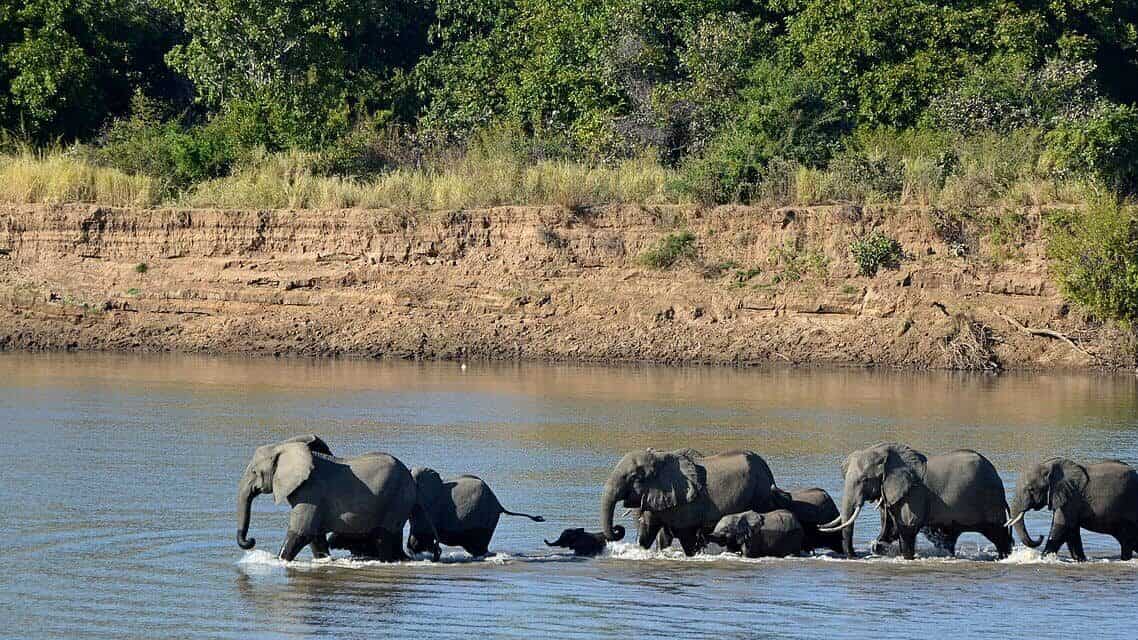
The Okavango Delta offers perhaps the most unique elephant viewing experience on Earth—observing these massive land mammals swimming between islands in this massive inland delta. When the annual floods arrive between June and August, the delta becomes a mosaic of waterways, islands, and floodplains covering up to 15,000 square kilometers. Elephants have adapted remarkably to this semi-aquatic environment, often crossing deep channels with only their trunks visible above water like natural snorkels. The delta supports around 130,000 elephants as part of the larger population moving between Botswana, Zimbabwe, Namibia, and Angola.
What distinguishes the Okavango elephant experience is the variety of viewing perspectives. Traditional mokoro (dugout canoe) safaris allow silent, water-level observation of elephants feeding along channel edges. Walking safaris on islands provide heart-pounding encounters with elephants moving through woodlands. Meanwhile, light aircraft flights reveal the true scale of elephant presence from above, with herds creating paths through papyrus and crossing between islands. Botswana’s conservation-focused tourism model, with low-volume, high-value approaches, means visitors experience these elephant encounters in relative exclusivity, often with no other vehicles or boats in sight. The combination of pristine wilderness, abundant elephants, and diverse viewing methods makes the Okavango a premier destination for immersive elephant experiences.
Periyar National Park, India
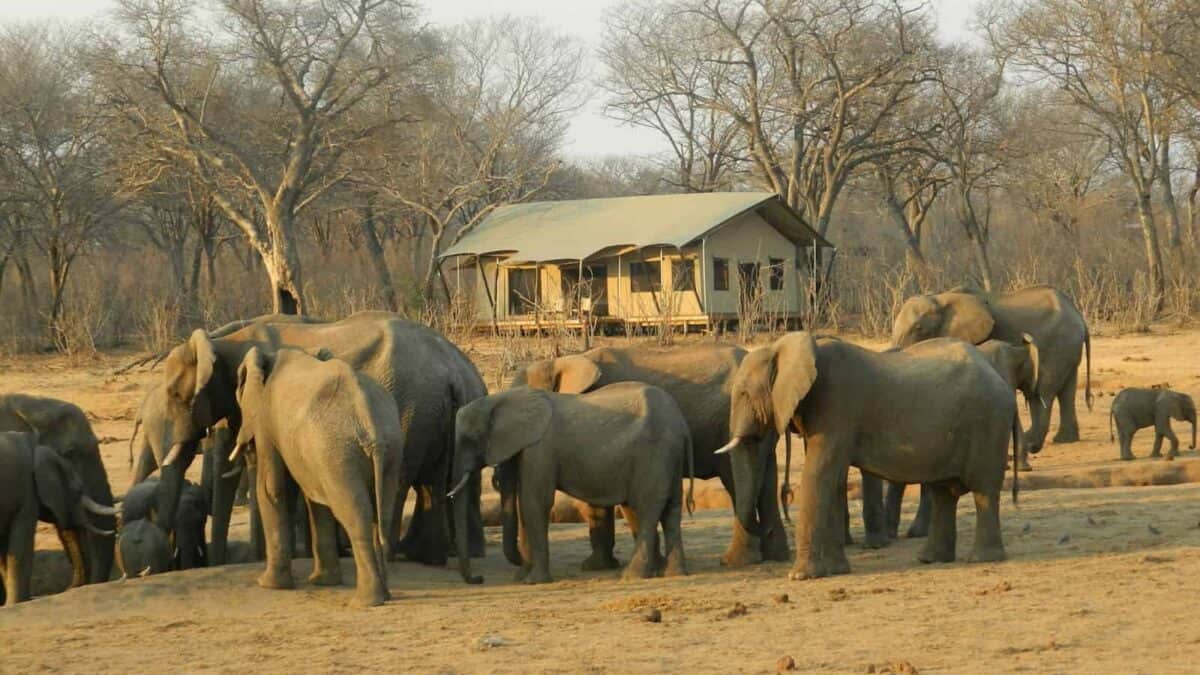
Deep in the Western Ghats mountains of Kerala, Periyar National Park offers a distinctive elephant viewing experience centered around a massive artificial lake created by the Mullaperiyar Dam. What makes Periyar unique is the opportunity to observe Asian elephants from silent boats drifting on the lake, where herds gather at the water’s edge during the dry season (December to April). The mountainous, forested terrain creates a dramatic backdrop as elephants emerge from dense bamboo and tropical evergreen forests to drink, bathe, and feed on the lush vegetation along the shoreline.
Periyar protects one of India’s more stable elephant populations within 925 square kilometers of protected forest. Unlike some parks where safari vehicles follow fixed roads, Periyar’s boat safaris and guided hiking trails through the forest provide more unpredictable and authentic wildlife encounters. The park exemplifies the conservation challenges facing Asian elephants, with protected habitat surrounded by tea and spice plantations where human-elephant conflict occurs. Responsible tourism here directly supports ranger patrols and community-based protection efforts. For visitors seeking a deeper understanding of Asian elephant conservation, Periyar’s tribal trackers share generations of knowledge about elephant behavior and the delicate balance between these magnificent animals and human communities.
Tarangire National Park, Tanzania
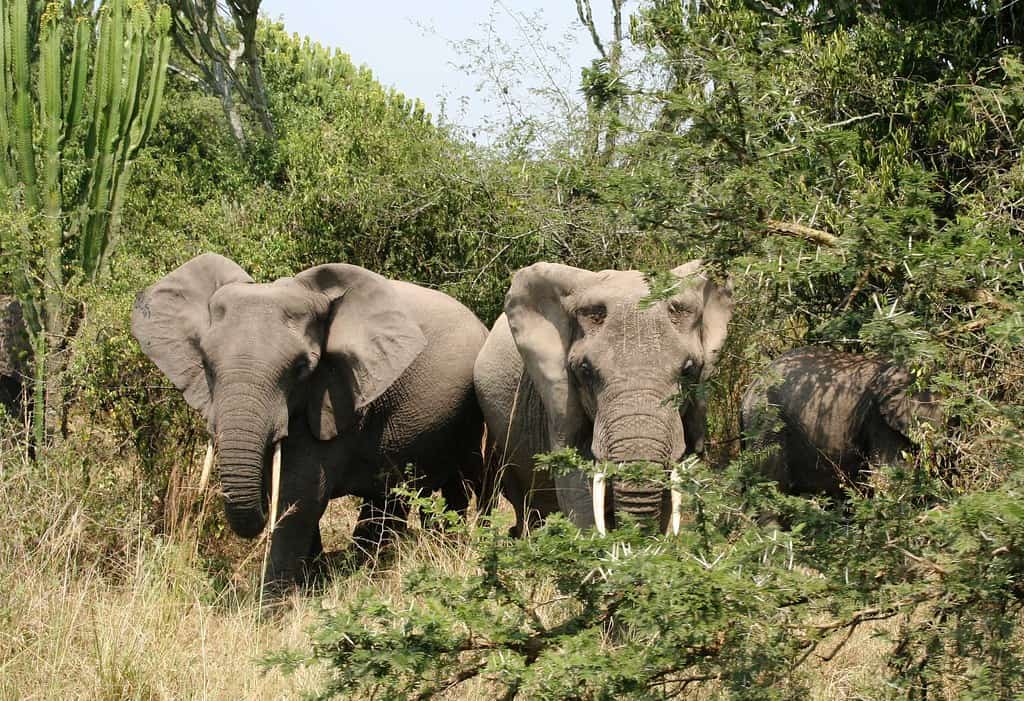
While the Serengeti draws crowds for the Great Migration, nearby Tarangire National Park offers exceptional elephant viewing within a less-visited gem of Tanzania’s northern safari circuit. During the dry season (June to October), Tarangire hosts one of the highest elephant densities in Africa as herds congregate along the Tarangire River—the area’s only reliable water source. The park’s distinctive landscape of rolling hills dotted with ancient baobab trees creates magical settings for elephant observation, with these massive mammals often framed against the gnarly silhouettes of baobabs that can be thousands of years old.
What distinguishes Tarangire’s approximately 4,000 elephants is their remarkable adaptation to the cycle of seasonal water scarcity. Using their remarkable spatial memory and possibly communicating over long distances, family groups navigate precisely to water sources as the dry season intensifies. Visitors witness extraordinary behaviors as elephants dig wells in dry riverbeds using their trunks, feet, and tusks to access subsurface water. The park’s varied habitats, from riverine forests to seasonal swamps and open savanna, support different feeding strategies that visitors can observe throughout the day. For photographers, Tarangire offers spectacular opportunities as elephants dust-bathe in the late afternoon light, creating golden clouds that backlight these magnificent creatures against the dramatic landscape.
Way Kambas National Park, Indonesia

For those seeking encounters with the critically endangered Sumatran elephant, Way Kambas National Park on the eastern coast of Sumatra offers the most reliable viewing opportunities. With fewer than 2,000 Sumatran elephants remaining in the wild, this subspecies represents one of the most threatened elephant populations globally. Way Kambas protects a significant habitat fragment for these elephants, with around 200 individuals roaming its lowland forests, swamps, and riverine areas. What makes this park special is the combination of wild elephant observation and conservation education through the park’s Elephant Conservation Center.
Unlike African elephant viewing, spotting wild Sumatran elephants requires patience and specialized guiding, as these smaller, shyer elephants prefer dense forest habitats. The best opportunities come through guided river safaris along the Way Kanan River, where elephants visit in early mornings and late afternoons. The park represents the complex conservation challenges facing Asian elephants, with habitat fragmentation, human-elephant conflict, and poaching all threatening the remaining population. For visitors seeking more guaranteed elephant encounters while supporting conservation, the park’s Elephant Conservation Center cares for formerly captive and conflict elephants, offering educational experiences that directly fund protection efforts for the wild population.
Hwange National Park, Zimbabwe

Zimbabwe’s largest national park harbors an astonishing elephant population estimated at 45,000-53,000 individuals—far exceeding the land’s ecological carrying capacity. This concentration creates both conservation challenges and extraordinary viewing opportunities, particularly during the dry season (August to October) when elephants gather around artificially maintained waterholes. What makes Hwange’s elephant viewing special is the sheer scale of gatherings—hundreds of elephants may visit a single waterhole in 24 hours, with peak viewing at sunset when family herds emerge from the surrounding woodlands to drink and bathe.
The park’s network of concealed viewing blinds and platforms overlooking waterholes allows for intimate observation of elephant society: matriarchs making decisions, calves playing under watchful eyes, and bulls testing hierarchies through ritualized contests. During severe droughts, Hwange becomes a crucial refuge where elephants demonstrate remarkable adaptations to water scarcity, including digging wells and traveling long distances between water and feeding areas. For conservation-minded travelers, Hwange offers a deeper understanding of the challenges facing elephant management, as the park must artificially pump groundwater to support its unusually large elephant population—a controversial but necessary intervention that tourism directly funds. The combination of abundant elephants, excellent visibility, and educational opportunities makes Hwange one of Africa’s premier elephant destinations.
Kui Buri National Park, Thailand

For ethical wildlife enthusiasts seeking wild elephant encounters in Thailand—a country often associated with problematic captive elephant tourism—Kui Buri National Park offers an outstanding alternative. Located near Hua Hin in southern Thailand, this lesser-known protected area provides the most reliable wild elephant viewing in the country, with nearly guaranteed sightings during evening safaris. What distinguishes Kui Buri is the successful community-based conservation model that transformed former conflict areas into a sanctuary where approximately 320 wild Asian elephants now thrive alongside gaur, banteng, and numerous other species.
The park’s organized safari program takes visitors in open-backed trucks to designated viewing areas overlooking grasslands where elephants emerge from the forest in late afternoons. Unlike some wildlife tourism that disrupts natural behavior, Kui Buri’s approach keeps vehicles at fixed viewpoints while elephants move naturally through their habitat, often approaching quite close of their own accord. This creates a non-intrusive experience while still allowing excellent photography opportunities. The park represents a conservation success story where former poachers have become guides and protectors, and farmers who once conflicted with crop-raiding elephants now benefit from tourism. For travelers to Thailand seeking ethical elephant experiences, Kui Buri offers a meaningful alternative to elephant riding or other problematic captive elephant activities.
Responsible Elephant Tourism: Ensuring a Future for Wild Elephants

As we’ve explored the world’s premier destinations for observing wild elephants, it’s crucial to understand how our tourism choices impact these magnificent creatures and their habitats. Responsible elephant tourism goes beyond seeking spectacular sightings—it involves making ethical choices that contribute to conservation and community welfare. The most reputable parks enforce strict viewing guidelines, including maintaining appropriate distances, limiting vehicle numbers around elephants, and prohibiting off-road driving in sensitive habitats. By patronizing these protected areas and choosing operators with strong conservation credentials, visitors directly fund anti-poaching efforts, habitat protection, and community engagement programs.
The contrast between ethical wild elephant viewing and problematic captive elephant attractions couldn’t be more stark. While riding elephants, watching them perform unnatural behaviors, or interacting with them in captivity remains popular in some countries, these activities typically involve cruel training methods and poor welfare standards. By choosing instead to observe elephants respectfully in their natural habitats, travelers not only enjoy more authentic wildlife experiences but also contribute to a tourism model that values elephants as wild, free-living beings deserving protection. As elephant populations face mounting pressures from habitat loss, poaching, and human-wildlife conflict, responsible tourism represents one of the most powerful economic arguments for preserving the wild spaces these majestic animals need to survive. Your choices as a traveler truly matter to the future of wild elephants.
Conclusion: The Privilege of Witnessing Giants

Encountering wild elephants in their natural habitats ranks among life’s most profound wildlife experiences. These intelligent, social creatures—with their complex family bonds, emotional depth, and crucial ecological roles—offer us glimpses into a wisdom and way of being that has evolved over millions of years. From the vast herds of Chobe to the critically endangered Sumatran elephants of Way Kambas, each elephant-watching destination reveals different aspects of these remarkable animals’ lives and the diverse ecosystems they inhabit.
Ultimately, witnessing elephants in the wild is not only a privilege but also a responsibility. As human pressures on elephant populations intensify—from poaching and habitat loss to human-wildlife conflict—our role as respectful observers becomes even more vital. By supporting ethical tourism, advocating for conservation, and spreading awareness of their plight, we contribute to a future where these giants continue to roam free. Let every encounter be a reminder of their majesty—and a call to protect the wild spaces they need to survive.
- This Fish Has the Most Teeth in the Ocean—And Uses Them Well - August 9, 2025
- How Wolves Use Group Howls to Reunite With Pups - August 9, 2025
- 12 Dog Breeds That Form the Deepest Emotional Bonds with Their Owners - August 9, 2025

